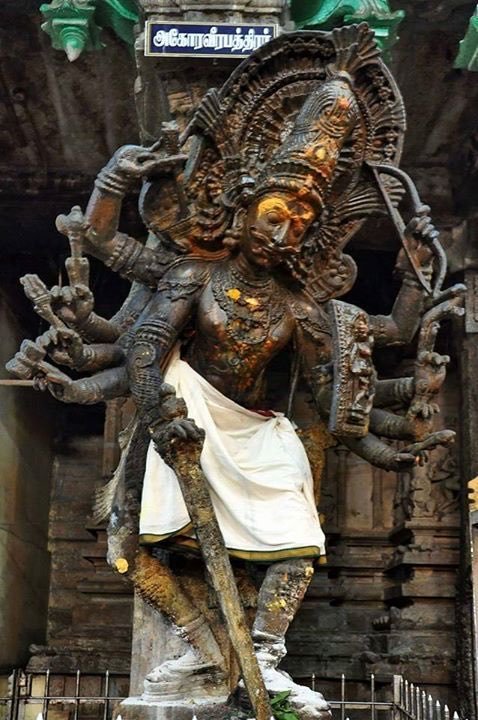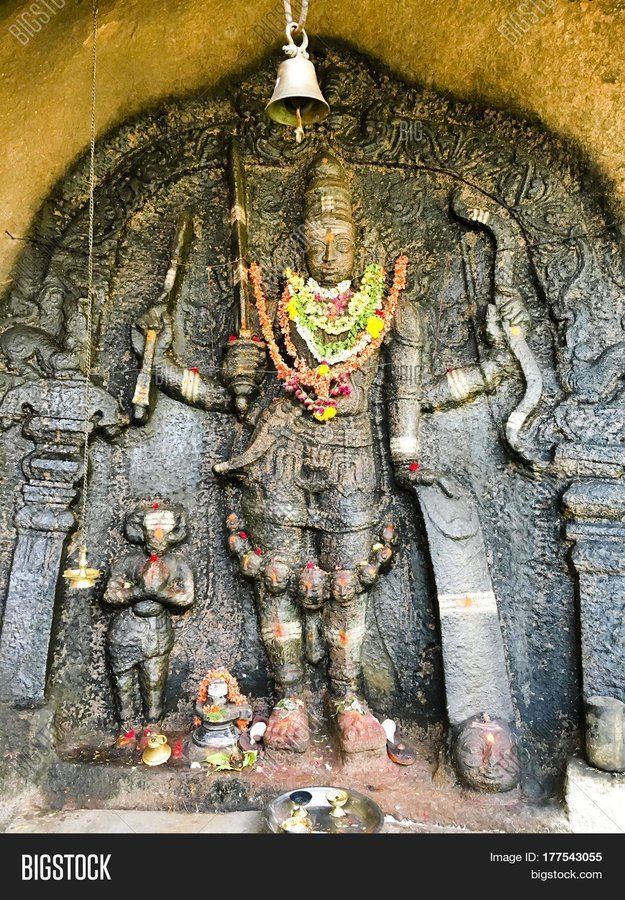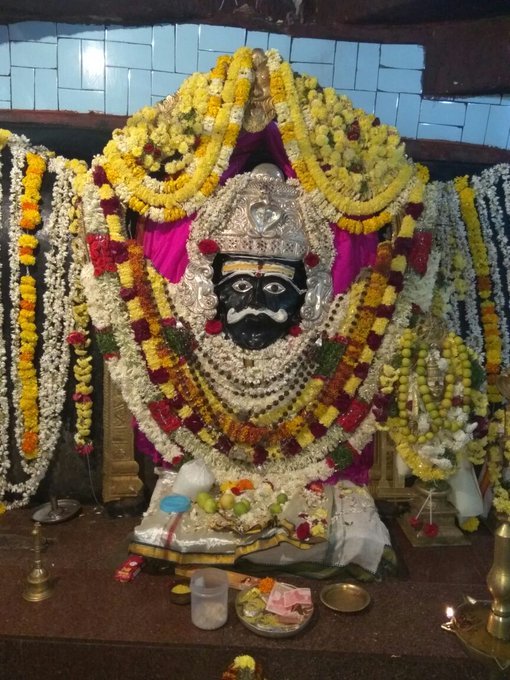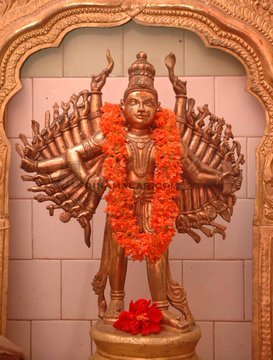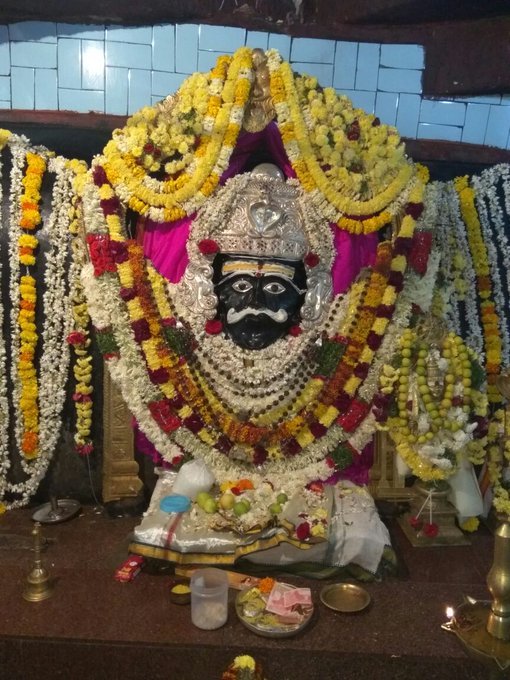तमीश्वराणां परमं महेश्वरं तं देवतानां परमञ्च दैवतं ।
पतिं पतीनां परमं परस्ताद् विधेम देवं भुवनेशमीढ्यम् ।।தமீஶ்வராணாம் பரமம் மஹேஶ்வரம் தம் தே³வதானாம் பரமஞ்ச தை³வதம் |
பதிம் பதீனாம் பரமம் பரஸ்தாத்³ விதே⁴ம தே³வம் பு⁴வனேஶமீட்⁴யம் ||“ஈசுரர்களுக்குள்ளே பரமமகேசுவரராயும், தேவர்களுக்குள்ளே மஹாதேவராயும், மேலாய பரமபதியாயும்,புவநேசராயும், ஸ்துதிக்கற்பாலராயுமுள்ள அந்த மஹாதேவரை அறிகின்றோம்” என்று ஸ்வேதாஸ்வதரோபநிடதம் குறிப்பிடுகிறது.
Transliteration :
tam-īśvarāṇāṃ paramaṃ maheśvaraṃtaṃ devatānāṃ paramaṃ ca daivatam ।
patiṃ patīnāṃ paramaṃ parastādvidāma devaṃ bhuvaneśam-īḍyam ।।
-Śvetāśvataropaniṣad 6.7
Translation :
We know Him who is the Supreme Lord of lords, the Supreme Deity of deities, the Ruler of rulers;
who is higher than the imperishable prakriti and is the self-luminous, adorable Lord of the world.
Category: Meykanda Sastras
-

Svētāsvara upaniṭatam
-
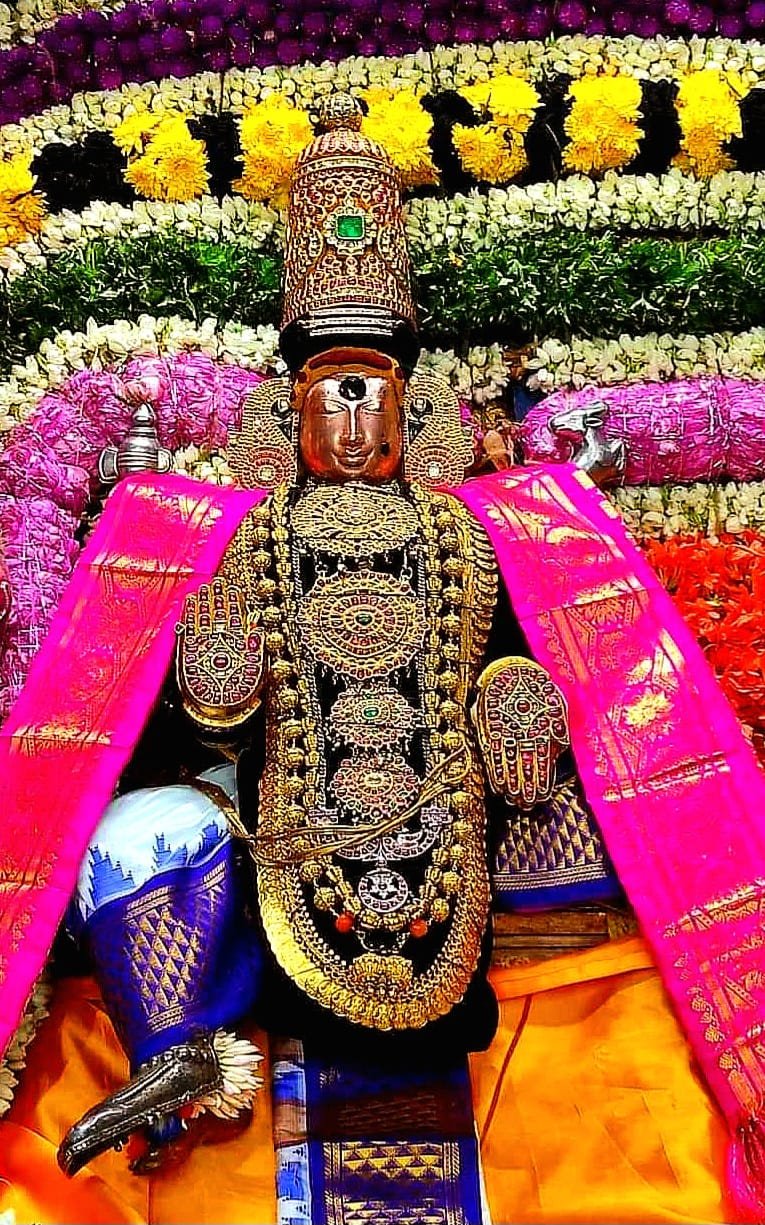
Civapuṇṇiyatteḷivu
அடியார்க்கு எளியனாகிய இறைவன், ஆலயத்துக்கு வந்து தரிசிக்காத பலருக்கும் அருள் சுரக்கத் திருவிழாக் காலங்களில் வெளியே உலாவருகிறான். அவ்வமயம் பாராமுகமாயும், படுத்துத் தூங்கிக் கொண்டும் இருப்பவர்கள் பாவத்தை ஈட்டுகின்றனர்.
திருவிழாக்களில் ஈசனை வலம்வந்தால் ஒவ்வோரடிக்கும் அசுவமேதப் பலன் கிட்டும்( சிவபுண்ணியத்தெளிவு 34) ஏதாவது ஒரு காலம் வலம் வந்தாலும் ஏழு பிறவிப் பாவம் போகும்; திருவிழாவில் நாள் தோறும் வலம் வருபவர். உருத்திரப் பதவியை அடைவர் (சிவபுண்ணியத்தெளிவு 37)
திருவிழா ஆரம்பத்தில் இடபக் கொடி ஏற்றப்படும்; அவ்வமயம் அக்கொடிப் பின் சென்று வலம் வருவோர்க்கு பூமி, பொன், புத்திரர், பெளத்திரர் முதலிய செல்வம் பெருகும். (சிவபுண்ணியத்தெளிவு 35)
இடபக் கொடியை ஏற்றும் காலத்துச் செய்யப்படும் நிவேதனமான இடப நிவேதனத்தை அன்போடு ஏற்று அருந்தும் பெண், மலடி என்று நிச்சயிக்கப்பட்டிருந்தாலும் சிறந்த மகவைப் பெற்றெடுப்பாள் (சிவபுண்ணியத்தெளிவு 36)
-
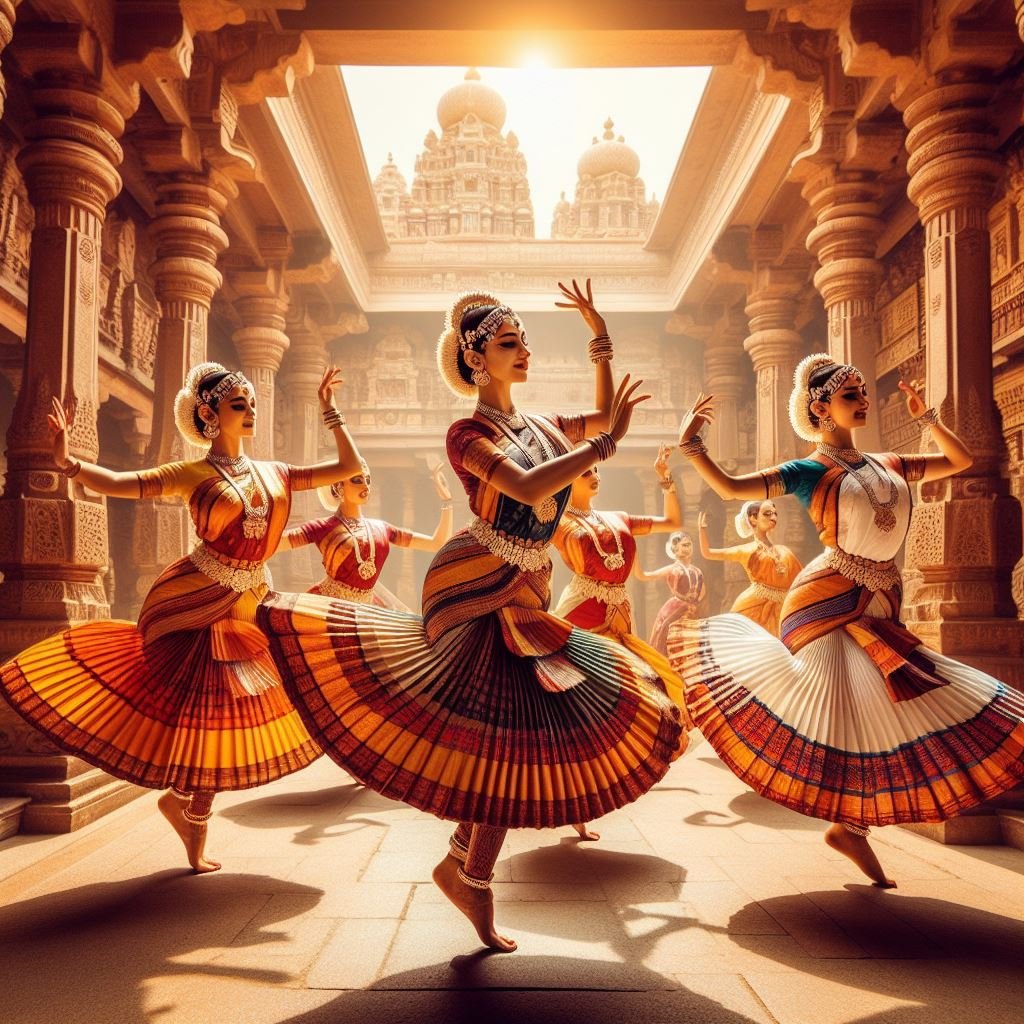
A short note on Devadasis / Devaradiyars
Source : T.S.Krishnan Devadasis or Devaradiyars, who were basically dancers & servants in the temple, held a respectable place in the society during the age of Tamil kings before the demeaning of them started at a later age. The inscriptions in the temple mention them in high regard. The Rudra Kanyas, as they are called need to go through a proper Diksha before being appointed as dancers. Kamika Agama gives the Diksha process for them which involves doing poojas to a stick (Kol). That’s why they are also called as Dandini (or Koli in Tamil) and the name of their leader is Thalaikoli. They have the prefix as ‘Nakkan’ which prof. Sankaranayarayan opines that came from Nagna. They were born to Siva when he came as Bikshadana & hence they are in fact daughters of Siva according to him. When we look at the longest inscription in Thanjavur temple, it says Rajaraja Chola employed 400 dancers to the temple and most of them have ‘Nakkan’ as their prefix.
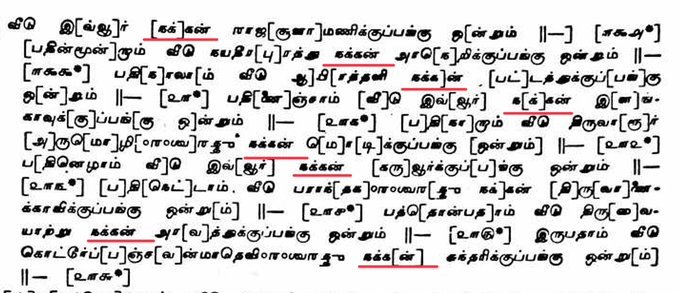
An inscription in Thiruvorriyur temple which belong to Raja Narayana Sambuvaraya period says there were three types of Devaradiyars who were performing duties in the temple. It says that a number of ‘Pathiyilars’ who were appointed during the time of Jatavarma Sundara Pandya, died and hence the temple authorities appointed ‘Rishabha Taliyilar’ to assist the remaining pathiyilars.
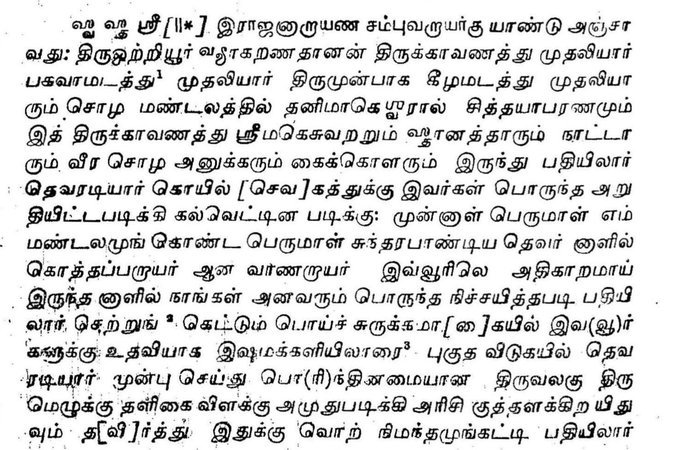
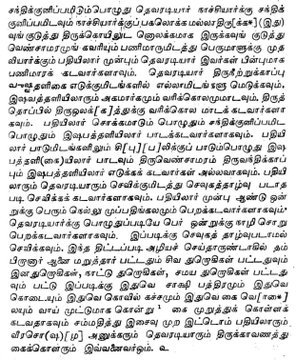
Pathiyilars played ‘Sokkam’ (which is basically Suththa Nruthyam in Tamil) and Rishabha Taliyalar’s gave vocal support. They also performed ‘Agamarkam’ and ‘Varikkolam’ dances. The third type ‘Devaradiyars’ performed ‘Sandikkunippam’ a dance form in the shrine of the goddess. The work done by them like ‘Tiruvalagu’ (sweeping), ‘Tirumezhuku’ (cleaning with cow dung), Taligaivilakku (cleaning utensils), cleaning the rice were taken out from them and given to others, says the inscription. This clearly gives us the details of work and the dances performed by Rudra Kanyas.

In addition, there are number of inscriptions which mentions about the donations given by the Devaradiyars to various temples. For example, an inscription in Thiruvalanjuzhi says one ‘Atkondan Thevu’, a devaradiyar from that place gave grants for Nithya Pooja. Another one in Thiruvakkarai mentions about a land donation made by a devaradiyar named ‘Seerazhvi’. So Devaradiyars as such were held in high esteem and were temple servants and had to undergo a proper Diksha process to get appointed even.

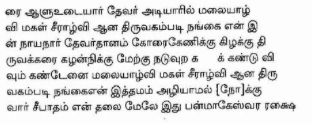
It also needs to be stressed that these are voluntary works undertaken by few without any force whatsoever. They were also free to go out of it and can take a regular life outside the temple if they wish.
The sacred work of Devaradiyar later became subject to various scandals. One of them is that it was created by some Brahmins. That is wrong. There are Brahmin women in the divine service called Devaradiyars. In this inscription, “Devaradial Thillaipran Pattar Nambimaril Sentyana Mangaiyarkarasi” belonged to a Brahmin clan. This inscription mentions his donation.

-
Siddhānta explanation of Kālī
The Siddhānta explains Kālī as a name denoting the particular function of ŚIva’s śakti in relation to concealing a bound soul’s (Paśu’s) vision. One can clearly see how concealed is his understanding & intellect.
Just to explain a bit, JBP sees in Kālī’s imagery the Jungian archetype of the Devouring Mother. His own words on that archetype here:
https://extrafilespace.wordpress.com/2020/06/04/jordan-peterson-on-the-devouring-mother-archetype/ Now that we all had our fun bashing him for his imbecile take, it’s important to understand why his take is idiotic.

JBP’s tweet referring to Kālī being worshiped at Universities seems absolutely random till you see this piece of prose linking the Devouring Mother & Western Universities/Academia.


It’s actually a bizarre comparison because the Upāsana of Kālī will help accelerate the consumption of Karma (good & bad) & that brings the soul more out into the open than ever, rather than protecting the soul from difficult experiences.
Identifying Kālī with woke movements that use political correctness & protection if the offended/“oppressed” as a pretext to justify the suppression of free speech is even more bizarre.
Fierce deities like Kālī are specifically & often singled out as being for those of a strong mind, not for the weak-hearted ones; certainly not those who play victims all the time.
In trying to make sense of an increasingly unstable society in which he has to live & earn, JBP has unthinkingly superimposed his own Jungian-inspired nonsense to Kālī’s deep & profound imagery.
Kālī, when understood properly, does not infantilize Her bhaktas but makes them impregnably strong Vīras just as Śiva makes His ones glorious Rudras who create awe even as they walk on earth in the guise of mortals.
Kāli does devour but the devouring is not directed towards Her worshipers, who are indeed her children, but towards the internal impurity (the power of mala) that limits a soul’s true & godly potential.
-
Tirukalitrupadiyar – Discourse by Tiru Sourirajan Ayya
Dear viewer, the video content in this page is in Tamizh.
The embedded video content in this page and their respective copyrights belong to the original content owners and have been shared here for informational purposes only.
Part 1 Part 2 Part 3 Part 4 Part 5 Part 6
-
Sivaprakasam – Discourse by Tiru Sourirajan Ayya
Dear viewer, the video content in this page is in Tamizh.
The embedded video content in this page and their respective copyrights belong to the original content owners and have been shared here for informational purposes only.
Part 1 Part 2 Part 3 Part 4 Part 5 Part 6 Part 7 Part 8
-
Saiva Siddantham Introduction – Discourse by Tiru Sourirajan Ayya
Dear viewer, the video content in this page is in Tamizh.
The embedded video content in this page and their respective copyrights belong to the original content owners and have been shared here for informational purposes only.
Saivam
Saiva Samayam Iraivan (Godhead)
Iraivan Soul
Uyir (Soul) Anavam (I ‘ness)
Definition of Anava Karma
Karma Maya
Maya Jabam/Japa (meditative repetition of a mantra) – Part 1
Jabam Jabam/Japa (meditative repetition of a mantra) – Part 2
Jabam – 2 Saiva Liturgy & Worship
Saiva Liturgy & Worship
-
Saiva Siddantha Sastras – Discourse by Tiru Sourirajan Ayya
Dear viewer, the video content in this page is in Tamizh.
The embedded video content in this page and their respective copyrights belong to the original content owners and have been shared here for informational purposes only.
Part 1 Part 2 Part 3 Part 4 Part 5 Part 6 Part 7
-
Tiruvarutpayan – Discourse by Tiru Sourirajan Ayya
Dear viewer, the video content in this page is in Tamizh.
The embedded video content in this page and their respective copyrights belong to the original content owners and have been shared here for informational purposes only.
Link to read in English : Thiruvarutpayan Of Umapathi Sivacharya – The Dance of Siva Nataraja
Part 1 Part 2 Part 3 Part 4 Part 5 Part 6 Part 7
